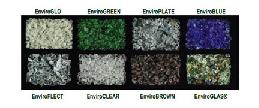Experiencing a leaky basement can be a harrowing prospect for any homeowner. Unwanted water intrusion not only damages your property, but it also encourages mold growth and compromises your home’s structural integrity. Having effective, eco-friendly solutions to address these issues is vital.
You are likely searching for ways to combat this problem without causing further environmental harm. Worry no more as Pacific Waterproofing is here with sustainable techniques to fix your leaking basement. The sustainable methods focus on limiting waste and utilizing resources efficiently.
We recognize that everyone values their home and thus wants to employ the safest, most reliable means to protect them from damage. With our commitment to the environment and expertise in basement repairing, you can ensure the safety of your abode while minimizing the ecological impact.
Permeable Concrete Benefits
Finding an effective way to reduce runoff around your foundation is crucial. Permeable concrete can help redirect water into the soil and diminish flooding risks.
This eco-friendly material manages stormwater by allowing moisture to pass through it. You also benefit from improved groundwater recharge and significantly reduced heat island effects.
- Minimal Runoff: It channels rainwater into the soil, easing pressure on drains and lowering flood risks.
- Reduced Pollution: By skipping harmful sealers, you cut contaminants in runoff and promote healthier local waterways.
- Cooler Surface Temperature: Evaporation within the concrete helps keep surfaces cool, minimizing heat buildup near your basement walls.
- Improved Water Quality: Water filtering through permeable concrete naturally removes impurities, fostering better groundwater and healthier environments.
Homeowners who want a sustainable fix often rely on permeable driveways or walkways. It diverts water away from critical areas that can cause basement dampness.
Green Roof Implementation
Installing a green roof can help manage excess water by absorbing rainfall and releasing moisture slowly. That process reduces runoff near basement walls and foundation.
Focus on Internal Drainage
Without proper internal drainage, a vegetative system can completely trap water and compromise the building structure. You need effective drainage channels below the growing medium.
Check Membrane and Root Barriers
Select a membrane of at least 60 mil thickness for puncture resistance. Install root barriers to guard and ensure protection against aggressive plant growth underground.
Keep in mind that installing a green roof sometimes requires thorough structural reinforcement. Plan ahead with an engineer to confirm the building’s load-bearing capacity fully.
Waterproof membranes must be carefully placed, or hidden leaks can arise. A high-quality installation prevents water intrusion and helps preserve your basement’s overall dry environment.
Bentonite Clay Techniques
Leaky basement repairs can be invasive, but bentonite clay injections bring a gentler solution. This method seals foundation walls without major excavation or structural disruption.
The clay expands upon contact with moisture, forming a seal that pushes water away from your basement. That process keeps the interior dry all year.
- No-Digging Advantage: It avoids landscaping destruction by injecting bentonite into soil surrounding the basement wall.
- Long-Term Durability: Bentonite resists diverse conditions, effectively sealing even when shifting soils create movement around your foundation.
- Environmentally Safe: This clay is non-toxic and naturally sourced, offering a green alternative to synthetic sealing methods.
- Minimal Maintenance: Proper grading and gutter cleaning improve bentonite’s effectiveness; checks prevent minor issues from becoming leaks.
Early warning signs of moisture demand prompt attention. Bentonite clay repairs, combined with proper yard drainage, help maintain a healthy foundation for years to come.
You might watch a video demonstration of bentonite injection. Seeing it in action highlights how it keeps basements sealed without messy digs.
Eco-Friendly Sealant Choices
Sometimes you need a direct sealant for leaking cracks. Fortunately, numerous environmentally friendly sealants exist that truly protect your health and preserve the overall planet.
Low to Zero VOC Formulas
Opting for sealants with minimal VOC content keeps indoor air pure. You reduce harmful fumes that might aggravate breathing issues or potentially trigger allergic reactions.
Deep-Penetrating Products
Water-based sealants penetrate deeply into concrete, filling pores and preventing water infiltration. That approach can stop mold growth and mitigate radon entry quite effectively too.
Surface preparation is essential. Strip paint, old sealers, or algae to let the product bond thoroughly. Follow application instructions to ensure lasting basement waterproofing success.
Consider testing small areas first if you are uncertain. Eco-friendly sealants vary, so ensure the product suits your unique basement conditions and particular moisture levels.
Advanced Drainage Systems
Water entry remains the root problem for many basements. An advanced drainage system tackles the cause by rerouting water before it ever harms your interior.
Identifying leak points helps you decide whether an interior or exterior drainage approach suits your situation. Exterior solutions disrupt landscaping, while interior fixes concentrate indoors.
- Grading Assistance: Slope the soil away from walls to reduce water pressure against your foundation.
- Interior Drain Channels: Under-floor systems collect water and effectively direct it to a sump pump for rapid removal.
- Sump Pumps: Essential for removing accumulated water, these devices prevent flooding by activating when rising moisture hits a threshold.
- External Drain Tiles: Buried lines surrounding exterior footers capture groundwater before it seeps into walls.
Combining exterior grading fixes with interior channels often prevents repeated leaks. Address surface water quickly to avoid pooling that leads to basement dampness over time.
For specialized approaches, consult experts who handle wet basements. They tailor drainage systems to your setting, ensuring water diversion, long-term structural stability.
Recycled Material Options
Refurbished or repurposed materials conserve resources and substantially reduce construction waste. You gain a waterproof basement while also shrinking your carbon footprint with recycled components.
Recycled Rubber Membranes
Using membranes made from discarded tires keeps landfills clearer. These rubber sheets are durable, flexible, and suitable for basement walls that need a protective barrier.
Cork and Natural Insulation
Cork flooring resists water, providing a natural defense against moisture. It also delivers a soft surface underfoot, making the basement more comfortable and healthier overall.
Recycled materials offer both insulating and protective benefits. This strategy lowers overall environmental impact by giving waste items new life in your basement waterproofing system.
Look for products with credible eco-certifications to confirm quality and durability. Each alternative significantly reduces landfill overflow and promotes more sustainable basement construction projects overall.
Long-Term Cost Savings
Eco-friendly basement solutions often cost more upfront, but they frequently pay off. Sealing cracks and insulating your space saves money over an entire building’s lifetime.
Reduced Energy Usage
When you stop moisture leaks, your heating and cooling systems run more efficiently. Less dampness effectively prevents chilly drafts and keeps overall temperature levels stable.
Lower Insurance Costs
Preventing leaks lowers your risk of water damage, which can translate to reduced premiums. Insurance companies appreciate proactive measures that shield basements from flooding events.
These lower monthly bills free up resources for other home improvements. By eliminating moisture threats, you end up with fewer maintenance surprises down the road.
Proper waterproofing prevents repairs later. Mold remediation, structural corrections, and foundation fixes can cost thousands, so aiming for green solutions from the start pays off.
Your Green Solution
Embracing these eco-friendly solutions ensures you address leaky basement troubles while also protecting the environment. You are making wise decisions with cost savings in sight, and turning your home into a gre




